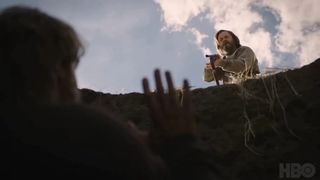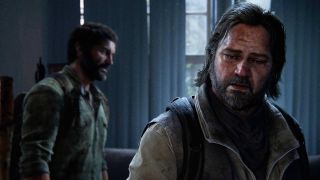The Last of Us showrunners explain that major episode 3 story shift
>
WARNING: This article contains spoilers for The Last of Us
HBO’s The Last of Us has received critical acclaim for its impressive loyalty to developer Naughty Dog’s time-defining PlayStation title, but the series’ third installment marked the first major departure from Joel and Ellie’s in-game story.
Long Long Time puts the spotlight on Bill (Nick Offerman) and Frank (Murray Bartlett), two lone survivors who come together in the aftermath of the global Cordyceps outbreak. Both characters make brief appearances in the original The Last of Us game, but HBO’s small screen adaptation devotes an entire hour to digging deeper into their decades-long relationship.
In an interview with TechRadar ahead of the series’ release, co-showrunners Neil Druckmann and Craig Mazin explained the thinking behind their decision to go off-piste with The Last of Us Episode 3 – which the pair have previously admitted (opens in new tab) will inevitably “upset” some fans.
“It came out of an interest I had in depicting Bill a little differently, because the Bill part of the game was very much built around gameplay,” says Mazin. “What fascinated me about Bill was that he was safe, that he had this interesting little safe haven in the world. Then my next question was, what happens to you when you are safe in this world? Now what? Do you stay there alone? What do you need Why are you continuing And I knew about the Frank storyline in the game, which to me reflected the worst possible outcome for Joel.
“But I thought there was a chance [with episode 3] to go in a different direction and explore the time lag between the outbreak and where we are now, and also create a relationship that worked,” continues Mazin. “A relationship that, in its duality, has helped define some of the themes we will see again and again [in the show] – two very different kinds of love. Someone who outwardly loves and cherishes and protects and creates. And one who loves through protection through force and preservation.
“So I remember saying to Nick [Offerman] and Murray [Bartlett] that this relationship is the basis of everything. Everything comes out in this [relationship]. And even if there is some chatter, in their own way they win. They get the happy ending.”
I think the change [in episode 3] became very indicative of what we prioritized on this show.
Neil Drukman
When adapting The Last of Us for the screen, Druckmann – who wrote the game’s original story – also felt it was important to leave certain gameplay-heavy moments on the cutting room floor.
“I think the change [in episode 3] became very indicative of what we prioritized on this show,” he says. steps and is upside down and Ellie has to get him out of the ditch. And then Bill shows up and Bill saves you and you bond with him through this long series of actions.” You rely on each other and then, through in-game dialogue and a bunch of different things, we reveal a hint to this backstory and relationship.
But part of Craig’s genius is to say, It’s not that important. That’s what would have been important in the past, if you’re modifying video games and looking at superficial aspects and thinking, “Oh, players want to see that gameplay moment.” That’s not what they want. They want the core of the heart of this experience. So when Craig said, “Let’s focus on Bill and Frank instead of the set piece, and do things that we couldn’t do in the game, like jump around in time, and really show how people survived these 20 years . gap’ – that’s a great counterexample to everything else we’re seeing [on Joel and Ellie’s journey]. That story is so beautiful and so moving.
“And eventually,” Druckmann concludes, “when Joel and Ellie get back to that story – yes, it’s different from what’s in the game, but it helps [the experience] in a way that I think is very strong for this medium. We couldn’t have told this story in-game. And likewise, I think the show would have been less if we had tried to tell the story [of Bill and Frank] in play here.”
The Last of Us is now streaming on HBO Max in the US and Sky Atlantic and NOW in the UK.


